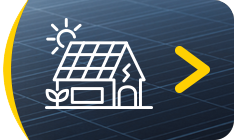- 05 Oct, 2017
- Solar Training , Definitions

The ancient Egyptians and Greeks sought to exploit the heat of the sun for various purposes. Already, the Greeks used an instrument called skaphia, a sort of parabolic mirror, to light the Olympic flame. We have to go back to Archimedes, about two centuries before our era, to find one of the earliest traces of inventions exploitingsolar energy. Archimedes, in fact, imagined using mirrors, known as burning mirrors, to set a fleet on fire in times of war. A controversy has arisen around the possibility that he used this technique to set the Roman fleet on fire during the siege of Syracuse. After him, around 100 B.C., Heron of Alexandria developed a water pumping system operating on solar energy, which inspired many others thereafter.
The possibilities of solar energy were further revealed by Buffon who, in 1747, constructed a mirror composed of 168 tin-plated and adjustable mirrors (the ancestor of concentrated solar power?), to concentrate energy on a single point. With this process, he managed to melt metals like tin or silver.
Saussure and also Lavoisier, who was the inventor of the first solar oven, produced numerous works on this subject. However, it was not until 1839 that the photovoltaic effect was discovered.
The Discovery of the Photovoltaic Effect
And it was the scientist Edmond Becquerel who made this discovery and developed the first photovoltaic cell. Later, Rudolph Hertz understood and presented the photovoltaic effect under this name. However, the photovoltaic phenomenon could only be explained years later by Einstein and Max Planck.
Subsequently, it was mainly within the context of space research that photovoltaic research continued and the first solar cells were developed in the 1940s. After the Second World War, research in this field became more precise with the development of more efficient and smaller cells that could equip satellites. Attempts to apply solar energy to other fields also emerged: in 1955, researchers at Bell Labs developed a high-efficiency cell intended to power telephones in isolated sites. However, the production cost of such technologies prevented them from being extended to other fields beyond aerospace until the 1970s.
The Return of Solar Energy
With the oil shocks of the 1970s, the issue of energy sources became more pressing, and solar energy returned to the forefront, attracting the attention of governments and industries. In 1973, the first house with photovoltaic electricity was inaugurated at the University of Delaware in the United States. At the same time, inventions aiming to apply solar energy to automobiles emerged, such as the solar car called Quiet Achievers by the Australian Hans Tholstrup in 1987.
In France, it was under the impetus of Valery Giscard d'Estaing that solar energy made its return: in 1979, he decided to support the solar sector and approved the construction of the first French solar power plant, Themis. This plant was completed in 1983 but closed three years later, as France had then chosen nuclear fission.
Finally, it was from 2007 that photovoltaic energy was truly brought back into the spotlight in a context of environmental and energy crisis. The Themis plant was reopened, and government, industrial, and individual projects, with the arrival of solar panels on roofs, multiplied. Nowadays, many research avenues for the massive exploitation of solar energy are being explored.











